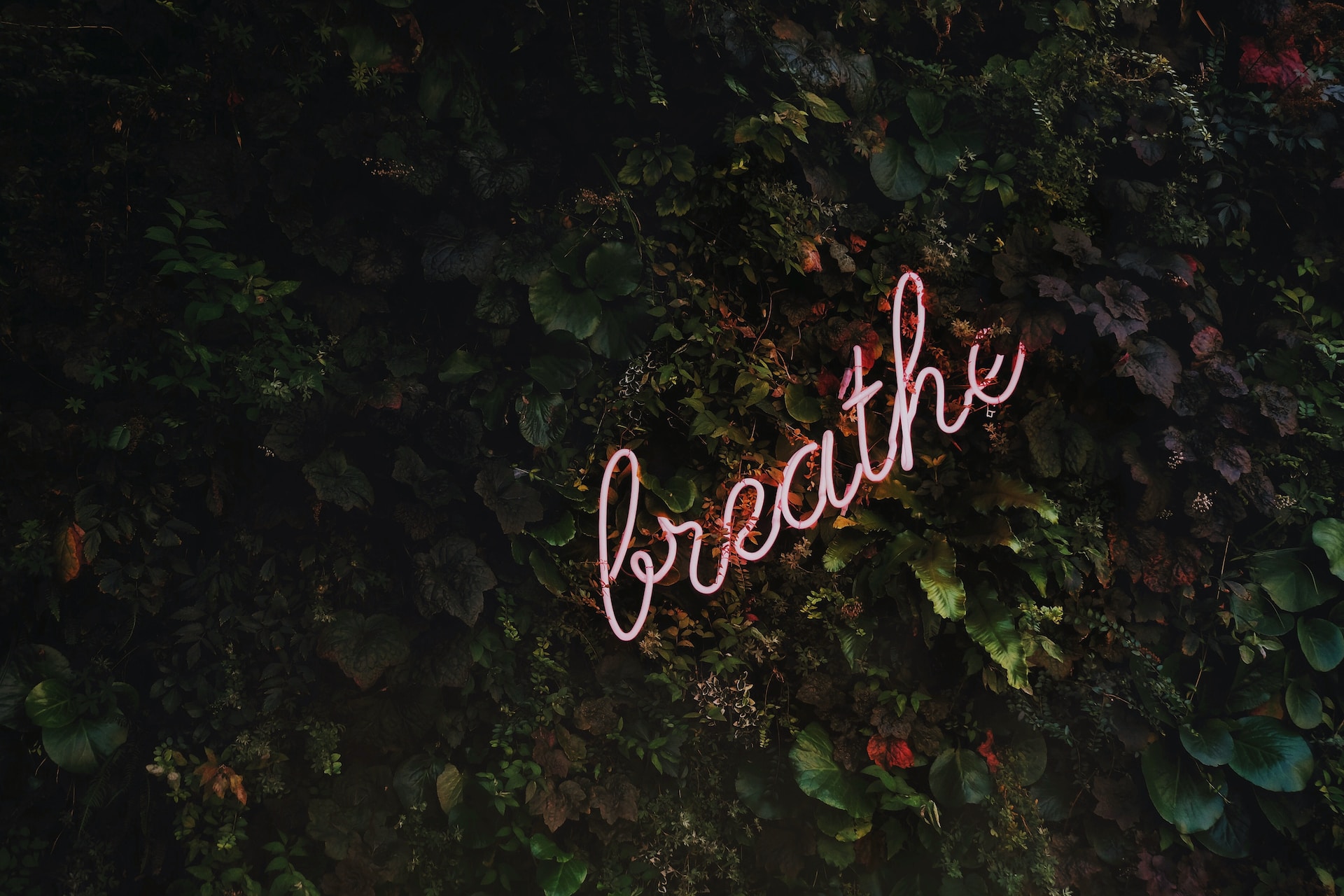The life of a creative, while invigorating and fulfilling, can also be filled with obstacles and rough terrain. Picture this – you’re navigating through a storm amidst wild winds of stress and torrents of unforeseen setbacks. The rough day disrupts your focus and dulls your creative spark, significantly hindering your ability to write and perform at your optimum level.
As an expert navigator who has weathered countless such storms, I want to reassure you that the storm clouds don’t signify the end. They’re opportunities to tap into undiscovered strengths, fine-tune our coping mechanisms, and surge ahead with renewed vigor.
With this guide, I aim to provide a comprehensive toolkit that will equip you to reclaim your day, no matter how stormy it gets. This exploration will dive into the depths of understanding the workings of stress, the intricate neuroscience behind it, and the ways you can master your reactions. Let’s embark on this resilience journey together to reclaim control, restore your creative energy, and bring sunshine back into your day after it’s gone astray.

Grasping the Maze of Stress and Its Aftermath
Life as an artist or a creative can often resemble a well-choreographed dance, where time, inspiration, and workflow move in perfect sync. But even a minor disruption can spiral into a tornado of stress, throwing you off your rhythm and taking your day from picture-perfect to an abstract mess.
The culprit behind this turmoil is typically our innate stress response. This complex reflex, a relic from our early ancestors, automatically leaps into action in the face of perceived threats. While it’s a lifesaver in imminent danger – say, if you encounter a wild animal on a hike – it’s not particularly beneficial in most modern-day scenarios. When the “threat” is your child unwittingly monopolizing your only available work time, the ensuing stress response can be more harmful than helpful.
It can seriously dampen our cognitive faculties, impeding our abilities to reason, maintain focus, and strategize effectively. These skills are our lifeline when navigating the labyrinthine challenges at home and in our workspaces. Without them, we’re left feeling overwhelmed and powerless, as if the whole world has invisible strings of stress puppeteer us.
The question then is, how do we snap these strings? How do we regain control, put our cognitive skills back in the driver’s seat, and steer our day back on track? Let’s delve into this transformative process.

Reclaiming Control: A Four-Step Plan
The symphony of a day unfolding as planned can be music to a creative’s ears. But what happens when discordant tones replace harmonious notes? A carefully crafted schedule thrown off balance, a tidal wave of interruptions washing over your precious work hours, a rising crescendo of stress causing your mind to play out of tune. Amid this chaos, reclaiming control may seem like a distant dream. However, it’s not only possible but well within your grasp. I present to you a meticulously designed four-step strategy that will help reset your day and firmly place the baton back in your hands.
This strategic approach aims to put you back in the conductor’s seat of your day, enabling you to create and dictate the rhythm rather than dance to unexpected stressors. These steps focus on combating the physiological responses that spiral out of control during stressful situations and activating mechanisms within our bodies that stimulate relaxation and tranquility. This restores our cognitive abilities, enabling us to reason, strategize, and focus again.
Grounded in neuroscience, this four-part strategy involves activating the parasympathetic nervous system, flooding the body with feel-good hormones, practicing tactical triage, and prepping for business success the following day. Each step plays a critical role in subduing the chaotic orchestra of a day gone awry and reinstating the harmonious symphony of productivity and creativity. So, let’s dive into this harmonious transformation together.

Step One: Awakening Your Parasympathetic Nervous System
The journey of turning around a day gone askew begins with a simple yet profound step: activating your parasympathetic nervous system. Think of it as the vital counterpart to the fight-or-flight-inducing sympathetic nervous system. It’s the calm after the storm, the salve that soothes your body’s chaotic ripples of stress.
The parasympathetic nervous system functions primarily through the vagus nerve. Stretching from your brain to your gut, this nerve weaves a vital line of communication between your brain and your body. By activating this nerve, you can effectively interrupt and calm the stress response wreaking havoc on your day. Here are a few science-backed techniques to help you do just that:
- Breathwork: This may sound not very interesting because, after all, we all breathe. However, structured breathing techniques can be potent. Consider the 4-7-8 method, a breathing technique that involves inhaling for a count of four, holding the breath for seven counts, and then exhaling slowly for eight counts. This pattern, significantly the extended exhale, stimulates the parasympathetic nervous system, countering the stress-induced accelerated heart rate and fostering calm.
- Emotional Freedom Technique (EFT): This innovative technique, commonly known as tapping, is a fusion of ancient Chinese acupressure and modern psychology. It involves vocalizing your feelings about the stressor while tapping specific meridian points on your body. This dual stimulation, like breathwork, can significantly lower heart rate and blood pressure, effectively neutralizing the stress response.
- Connecting with Nature: Mother nature has an undeniable therapeutic effect on our minds and bodies. Immersing yourself in natural surroundings, even briefly, can stimulate the parasympathetic nervous system in many ways. One such method is grounding—simply stepping barefoot onto natural surfaces like grass or sand. This seemingly mundane act can elicit a profoundly calming effect, anchoring your awareness to the here and now, away from the stressors distorting your day.
With the parasympathetic nervous system activated, you’re ready to embark on the next step of your stress-busting journey.

Step Two: Boost Feel-Good Hormones
Now that you’ve tamed the stress response, it’s time to transition to the second phase of reclaiming your day: introducing a flood of feel-good hormones into your body. These hormones work as an antidote to the cortisol and adrenaline cocktail that had previously held your system hostage during the stress response.
When we talk about feel-good hormones, we’re referring to endorphins, serotonin, and oxytocin. Each plays a unique role in uplifting your mood and cultivating a sense of well-being. Endorphins are your body’s natural painkillers, helping to alleviate stress. Serotonin is often called the happiness hormone; it helps balance mood and fosters feelings of contentment. Oxytocin dubbed the “love hormone,” can lower stress levels while promoting feelings of trust and bonding.
Here are some efficient ways to stimulate the production of these mood-enhancing hormones and kickstart your journey to a better day:
- Exercise: One of the most reliable and efficient ways to kickstart a surge of feel-good hormones is physical exercise. Numerous studies have consistently affirmed the role of exercise in generating a positive mood and reducing the effects of stress. It’s not only about physical fitness but also a crucial aspect of mental wellness.
Explore why exercise can be a great antidote to a challenging day. When you engage in physical activity, your brain responds by releasing endorphins. These are natural painkillers produced in response to stress or discomfort. But they’re also known as ‘feel-good’ hormones due to their ability to produce a positive feeling in the body, similar to morphine. This phenomenon is often referred to as a ‘runner’s high,’ but the truth is, you don’t need to be an athlete to experience these benefits. Any form of moderate-intensity exercise can bring about this positive shift in your mood.
Serotonin is another hormone that gets a boost from exercise. Often called the ‘happiness hormone,’ serotonin contributes to our well-being and happiness. It helps regulate mood, social behavior, appetite, sleep, memory, and sexual desire. By increasing serotonin levels, exercise helps us feel better, more confident, and more capable of tackling the challenges our day might throw at us.
So, what kind of exercise should you be doing? Research suggests that cardiovascular exercise of moderate intensity for at least 30 minutes can be highly effective in stimulating the release of endorphins and serotonin. This doesn’t mean you need to hit the gym or go for a marathon run. Activities like indoor or outdoor cycling, dancing, or even a brisk walk around your neighborhood can be enough to reap these benefits. The goal is to get your heart rate and blood flow, transforming your stress into productive energy. - Hugging: The simple act of embracing someone you love – a family member, close friend, or even a cherished pet – has powerful stress-relieving properties. This is attributed to releasing a cocktail of beneficial hormones, which profoundly affect your mood and general well-being.
To begin with, hugging releases serotonin, often called the ‘happy hormone.’ This is because serotonin contributes to an overall feeling of happiness and well-being. When serotonin levels are healthy, you’re more likely to feel less anxious, more emotionally stable, and generally more positive.
In addition to serotonin, they are hugging prompts the release of oxytocin, which is sometimes referred to as the ‘bonding hormone’ or ‘cuddle hormone.’ This hormone plays a crucial role in social bonding and trust-building. It fosters attachment, intimacy, and affection, helping us build solid and healthy relationships.
But that’s not all. Hugging doesn’t only boost the ‘good’ hormones – it also helps to lower levels of the ‘bad’ ones. Specifically, it helps reduce the cortisol and adrenaline levels in your body, known as stress hormones. High levels of these hormones can cause various adverse effects, from anxiety and insomnia to high blood pressure and heart disease. By reducing these hormones, hugging helps to mitigate these adverse effects and promotes relaxation.
Therefore, amid a stressful day, taking a few minutes to share a warm embrace with a loved one can have a surprisingly powerful impact. It can provide a moment of tranquility on a chaotic day, help you feel more connected and loved, and significantly uplift your mood. It’s a simple yet effective tool in your stress-management toolkit – always readily available and accessible. - Sex: An option that may not immediately spring to mind amidst the chaos of a stressful workday is engaging in sexual activity. However, should circumstances permit, it can be a powerful and enjoyable method of stress relief. A lovemaking session is a potent stimulator of endorphins, your body’s natural mood boosters and painkillers, released in response to physical activity. The physical exertion involved in sex can mimic the effects of a short, vigorous workout, hence triggering the endorphin surge.
Moreover, sexual activity and orgasms specifically lead to the release of oxytocin, often referred to as the ‘bonding’ or ‘love’ hormone. This hormone plays a crucial role in social bonding, sexual reproduction, childbirth, and the period after childbirth. Oxytocin can foster a deep sense of intimacy and closeness, further amplifying the stress-relieving effects of sex.
In the context of a committed relationship, these benefits might even be magnified. The emotional connection and shared intimacy could further enhance the release of oxytocin, leading to stronger feelings of love and attachment. It’s also worth noting that the benefits are not merely immediate. Regular sexual activity can contribute to an overall reduction in stress levels and an enhanced sense of well-being.
However, it’s essential to remember that this option heavily relies on consent, comfort, and convenience for both partners. Consider this approach a form of mutual stress relief, a shared experience that can deepen your emotional connection while managing your stress.
By implementing these strategies, you’ll stop the stress response and infuse your body with positivity-enhancing hormones. This sets the perfect stage for you to tackle the stress source head-on, which is the focus point of our next step.

Step Three: Triage
Triage, a term often used in medical emergencies, involves assessing the urgency of a situation and deciding the order in which tasks or issues should be addressed. Similarly, when your day spirals out of control, the concept of triage can be a powerful tool to regain your footing.
It would be best to be calmer and more clear-headed after activating your parasympathetic nervous system and employing coping strategies. This is the perfect time to step back and reassess your stressors. As a creative, you’re likely juggling multiple tasks and deadlines simultaneously, which can undoubtedly feel overwhelming. You can prioritize your responsibilities more effectively by identifying what’s most crucial and urgent.
To begin your triage, list all the tasks or issues causing stress. Once you have a clear visual or written representation of your workload, ask yourself: Which tasks are time-sensitive? Which tasks are most important? What can be delegated, postponed, or even completely dropped? The aim is not to overburden yourself but to break your workload into manageable tasks.
Next, look for tasks that can be delegated. If you’re part of a team, you might find that some tasks can be shared or delegated to others. Not only will this lighten your workload, but it can also promote a sense of teamwork and shared responsibility. Alternatively, if you’re working alone, consider outsourcing or asking for help from friends, family, or professionals. Remember, it’s okay to ask for help when you need it.
Finally, embrace the power of saying no. It might be tempting to take on every opportunity that comes your way, but it’s important to remember your limits. Accepting tasks beyond your capacity can lead to burnout. Instead, focus on tasks aligned with your skills and goals, and don’t be afraid to let go of the rest.
Triage can also involve deciding to incur a small cost to alleviate a more considerable stressor. For example, as mentioned earlier, taking a minor fine for a late library book return instead of rushing through traffic to get there on time can alleviate unnecessary stress.
By implementing this triage system, you’re taking back control of your day. You’re reminding yourself that you can shape your day, and most importantly, you’re deciding to treat yourself with kindness and understanding. After all, stress may be an unwelcome guest, but how long it stays depends largely on your choices.

Step Four: Set Up For Success Tomorrow
After triaging your day and getting a handle on your immediate stressors, the final step in reclaiming control of your day involves setting yourself up for success tomorrow. This helps break the cycle of stressful days and gives you a sense of hope and something to look forward to.
One of the main challenges in overcoming a series of stressful days is the continuous activation of your amygdala, your brain’s threat detection center. When you’ve had a particularly stressful day, your amygdala might stay on high alert, making you anxious or edgy. This heightened state can persist the next day, making it difficult to relax, unwind, and recharge effectively.
To counteract this, it’s essential to consciously engage in activities that relax the amygdala and promote a state of calm. These activities often align with what physician and author Saundra Dalton-Smith categorizes as seven types of rest: physical, mental, spiritual, emotional, sensory, social, and creative. Understanding your personal rest needs and incorporating activities that address these areas is crucial.
Physical rest involves allowing your body time to recover and rejuvenate. This could include sleeping, taking a relaxing bath, or just simply lying down to rest. Mental rest might involve meditation, mindfulness exercises, or calming hobbies like reading. Spiritual rest could include prayer, meditation, or attending a religious service, providing peace and purpose.
Emotional rest includes expressing your feelings and emotions by speaking with a trusted friend or writing in a journal. Sensory rest involves withdrawing from activities that overstimulate the senses, such as spending time in a quiet, dark room or limiting screen time. Social rest involves spending quality time with loved ones, enjoying shared activities, and fostering a sense of connection and belonging.
Finally, creative rest refers to engaging in activities stimulate your imagination and creativity. This could involve drawing, painting, listening to or making music. Essentially, it’s anything that helps you tap into your inner creative spirit and allows for expressive freedom.
Remember, the goal isn’t to engage in all seven types of rest at once but to identify where you’re most depleted and focus on those areas. Over time, you’ll learn to recognize your specific rest needs and how to meet them effectively. This knowledge will set you up for success, not just for the next day but for many more days to come.
As you take these steps, remember that overcoming stress isn’t a one-time action but a continuous process. You’re reclaiming control of your day and establishing the habits and resilience that will serve you in the face of future stressors.
Final Thoughts
Managing a day that’s spun out of control can be daunting, especially when you’re a creative trying to channel your energies into innovative work. However, by understanding your stress and learning to manage it effectively, you can reclaim your day and elevate your overall well-being.
This guide provides a roadmap that equips you with various strategies—from activating your parasympathetic nervous system and embracing practices that induce positive hormones to deal with the root cause of your stress and setting yourself up for a successful tomorrow. It’s about reclaiming agency over your life and using it to guide your day rather than letting stress dictate your pace and productivity.
Remember, as a creative, your best work emerges when you are at peace with yourself and your surroundings. Even when the day seems to have slipped out of control, there is always a way to bring it back on track. These strategies are tools and powerful allies in your journey as a creative. Use them to turn a challenging day into an opportunity for growth and self-discovery.
Embrace these tactics, practice them regularly, and transform how you react to stress. By doing so, you learn to navigate the tumultuous journey that is a creative’s life and improve your resilience, enhance your productivity, and find a better balance in your life. So, the next time your day goes south, remember: you can turn it around. Keep this guide handy, and take control—no matter how your day unfolds.
Remember that as creatives, our best output comes from peace, not chaos. So, take charge, keep stress in check, and continue creating remarkable artwork.















